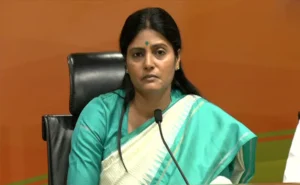Effect on relation with U.S. & EU
The recent imposition of countervailing duties (CVDs) by the United States and the European Union on four Indian products which includes paper file folders, common alloy aluminium sheet, forged stel fluid and certain graphite electrode, marks a significant escalation in trade tensions between these economic entities. This move is a direct response to India’s implementation of the Remission of Duties and Taxes on Export Products (RoDTEP) scheme, introduced in January 2021 to stimulate outbound shipments. The affected products include paper file folders, common alloy aluminum sheet, forged steel fluid end blocks in the case of the U.S., and certain graphite electrode systems in the case of the European Commission (EC).
Indian Government’s Reaction
India’s Minister of State for Commerce and Industry, Anupriya Patel, conveyed the outcomes of countervailing investigations to the Lok Sabha on Wednesday, highlighting the imposition of CVDs on the specified goods. The Indian government, along with the affected exporters, vehemently defended the subsidy allegations related to various central and state-level programs and schemes during both written and oral responses throughout the investigation process.
What is Countervailing Duties?
The imposition of countervailing duties is a common trade practice allowed under the World Trade Organization (WTO) rules. It enables countries to respond when they believe another member’s subsidies are causing harm to their domestic industries. In this case, the U.S. and the EU are asserting that India’s RoDTEP scheme provides unfair advantages to its exporters, leading to the decision to impose CVDs on selected Indian products.
India’s Response
India’s response, as articulated by Minister Anupriya Patel, hints at the possibility of escalating the matter to the WTO if bilateral resolutions prove elusive. The WTO’s Dispute Settlement mechanism provides a platform for member countries to address trade disputes arising from measures deemed inconsistent with WTO agreements.
Reason Behind This
As the trade tensions unfold, it becomes imperative to delve into the specifics of the RoDTEP scheme and the reasons behind the U.S. and EU’s concerns. The RoDTEP scheme was introduced to replace the Merchandise Exports from India Scheme (MEIS) and focuses on reimbursing taxes and duties on export products, aiming to boost competitiveness in global markets. However, the U.S. and the EU argue that the scheme violates international trade norms by conferring unfair advantages through government subsidies.
Countervailing Investigation in U.S.
In the U.S., the countervailing investigation targeted paper file folders, common alloy aluminum sheet, and forged steel fluid end blocks. The choice of these products suggests a strategic approach, focusing on industries where India has a significant export presence. Paper file folders, for instance, are crucial in various sectors, including office supplies and organizational systems. Common alloy aluminum sheet is a fundamental material with diverse applications, and forged steel fluid end blocks are essential components in the manufacturing of equipment used in oil and gas exploration.
Countervailing Duties in EU
On the EU front, the EC’s countervailing duties were directed at certain graphite electrode systems. Graphite electrodes are indispensable in electric arc furnace steelmaking, and any disruption in the supply chain can have cascading effects on the steel industry. The EC’s selection of this product for countervailing measures underscores its strategic intent to safeguard its industries from potential distortions caused by subsidized exports.
The imposition of countervailing duties reflects a broader trend of increased scrutiny on trade practices, with countries becoming more assertive in protecting their domestic industries. The clash between India and the U.S./EU highlights the delicate balance between fostering economic growth through export incentives and navigating the complexities of international trade regulations.
India’s Defense against Allegations
India’s defense against the subsidy allegations centers on justifying the RoDTEP scheme as a legitimate measure to enhance the competitiveness of its exporters. The government contends that the scheme is essential for supporting industries facing global headwinds, especially in the wake of the economic challenges posed by the COVID-19 pandemic.
WTO’s Role
As the dispute unfolds, the possibility of invoking the WTO Dispute Settlement mechanism looms large. This mechanism serves as a forum for resolving trade disputes by providing a structured and rules-based process. If India decides to pursue this avenue, it would signify a commitment to upholding its position on the legitimacy of the RoDTEP scheme within the framework of international trade agreements.
The implications of this trade dispute extend beyond the immediate parties involved. The outcome will set precedents for how countries navigate the fine line between fostering economic growth through export incentives and adhering to international trade norms. The WTO’s role in mediating such disputes becomes increasingly crucial in maintaining a semblance of order in the global trading system.
Consequences
The imposition of countervailing duties by the U.S. and the EU on select Indian products underscores the complexities of international trade relations. As countries grapple with the dual challenge of stimulating economic growth and adhering to established trade norms, trade disputes are likely to become more frequent. The RoDTEP scheme, intended to boost India’s export competitiveness, has become a focal point in this clash, raising questions about the balance between domestic economic interests and international trade regulations. The evolving situation emphasizes the need for diplomatic negotiations and a judicious approach to trade policies to ensure a harmonious global trade environment.










